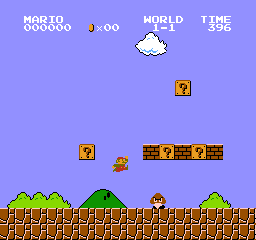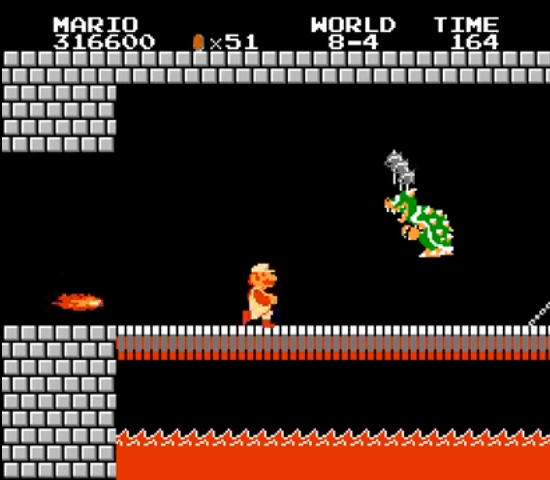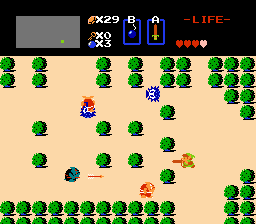Game Pacing: Differences Between Mediums
A post regarding some difference that games and other media pace their structure for their respective audiences.

Around the media, we talk a lot about a certain form of flow called “pacing.” When we talk about pacing, we talk about the rate in which a medium structures the sequence of events in a story, and how it is used to bring out the best of a singular experience. Good pacing is defined where sequence of events do not end up overshadowing each other to the point it hampers an experience. When it comes to talking about traditional forms of media such as film and novels, pacing structure is easier to grasp because the creators can tailor to the structure to their own preferences. However, games follow the formula rather differently due to a number of reasons.
Pacing in Film
Before I begin, I want to reiterate that many of my points may already be points known to the public, but I earnestly want to share my observations when it comes to examining both gaming and other traditional media when it comes to structuring entertainment.
The most standard, yet effective ways of gauging pacing is the Hero’s Journey structure. The simple breakdown of this follows a formulaic format. The Hero lives out a normal life in his ordinary world, receives a call to action. Initially, the hero declines the offer, but an event of some sorts –whether it be tragic or otherwise- propels the hero to undertake the journey. At this point, the Hero seeks out a Mentor, then after training, he embarks on his journey by crossing through to a completely new environment, one that is much more lethal than what the hero is accustomed to. The hero then undergoes both trials and ordeals, and meeting new people both good and bad, which helps prepare him for future tasks to come.
Example:
To bring up an example of how the Hero’s Journey structure works in film, I will use a recent movie to explain, “John Wick.” While the background of John Wick makes it hard to call the eponymous character a hero, the structure of the film falls closely in line with that of a typical Hero’s Journey structure. In the beginning, we see John living a very comfortable life, laying down the ordinary foundation. The call to action begins when the antagonist, Iosef, asks for the price of his car, in which John outright refuses. Later on, tragedy hits when Iosef invades John’s home, steals his car and kills his dog. To that end, this propels John to return to the life of assassination by contacting the organization he had originated from. The organization prepares John to embark on his quest to enact revenge on those who stole from him. So given the information above, the structure of the Hero’s Journey is heavily utilized in John Wick’s narrative. Additionally, while the movie was primarily full of action segments, there were also a fair share of quiet moments so as not to overburden the audience with non-stop action.
Covering structure and pacing in films is much easier, because the creators themselves tailor the film’s structure. The creator(s) alter every facet of a film medium, and it is the creator(s) job to be able to maximize the enjoyment possible by following a piece-by-piece structure. When we switch the perspective through the lens of a video game however, the pacing becomes much more free-flowing. In video games, the creator may not have as much control of the pacing of a video game because ultimately, the players can shape the experience for themselves. To clarify this, the creator can place sequences of importance in set intervals, but it is up to the player’s jurisdiction to reach those segments at their own pacing.
Pacing in Games: the Key Differences
It is easy to argue that games can produce the same kind of pacing as what films do. This statement holds ground with developer Naughty Dog’s two cinematic-driven franchises, Uncharted and The Last of Us. Being that both games bring much enjoyment from their story elements, the sequence of structure in their games were designed in a linear fashion, akin to that of films. For example in Uncharted 4, Nathan Drake had lived an ordinary life at the start, until the call to action from Sam in which Drake originally declines but then accepts after hearing Sam's doctored story about Alcazar, albeit reluctantly. From that point forward, the game becomes a sequence of events that give way to larger-than-life action scenarios paced alongside moments where Drake and co. explore new landmarks and develop their characters through dialogue. That being said, what is it that differentiates Uncharted from the likes of other treasure-hunting adventures in other media? My answer to this would be that the players themselves establish themselves into the role of Nathan Drake, and that they are experiencing all these events through assuming direct control of Nathan, rather than purveying the unfolding events through a 3rd person’s set of eyes.
To build off the previous point, the pacing in video games then becomes a subject matter that the player can influence directly. In movies and novels, events play out and the audience can only observe them. However, when the events unfold at the control of a player in the game, then the playing field changes. Now instead of gauging the players’ engagement through story elements, the creators also have to tailor the actual gameplay experience to create the flow of enjoyment. In film, the enjoyment of the audience, in the best-case scenario, gradually increases alongside the progression of events in the story. In a sense, the level of viewer immersion progresses in a movie due to dramatic buildup over the course of the movie. In the case of games, the rate at which the game’s structure progresses fluctuates as the player is the one in control of the game’s events. This is due to the possibility of the player tackling events at an order of their own preference.
![]()
The Challenge and Skill Matrix helps outline the structure of how events are placed
Enjoyment not out of story, but of gameplay.
Back in the early days, games had a one-track structure because of a singular goal. When it comes to Mario, the goal was to rescue the princess in a castle far away. In the original Legend of Zelda, the task was to save the world from the evil known as Ganon. While these goals sound simplistic on paper, the nuance in gameplay helped bring these enjoyments in game. When it comes to Mario, the path to the princess started out easy with simple levels that teach the player its mechanics through its design. Then as the game went on, the levels grew much more intense as the later levels grew from a simple playground to a true test of skill for the player. As such, being that the player wears the shoes of Mario, we understand that the path to the princess is an arduous one but still one to accomplish through perseverance. In a sense, the designer still has a bit of control on the player’s experience due to the structure of how the levels are placed, yet the player is still left to their own devices. But in a general sense, their own skill is elevated as the game’s challenge increases.


Super Mario's progression from a stomping ground to a test of skill
However, when we talk about a game with an open-world structure such as the original Legend of Zelda, the playing field opens up so much more. This is due to the more open-ended design; the player is placed in the game world, and has complete, if not slightly restricted freedom with what to do in it. By emphasizing this open-ended design, the player gains incentive to explore everywhere. However, one primary question remains, how would you be able to maintain player immersion with this kind of design? The creators of the game have left things open to the player, but how do they create the sequence of events which gauge player immersion. To do this, the open world must populated with things to do. Even more importantly, the creator needs to construct the world in a way that the player cannot feel entirely overwhelmed by the game’s challenges. An example of a game that I feel performs this facet admirably is Xenoblade Chronicles X, a game in which the primary game loop revolves around exploration. Over the course of the game, the player learns to pick their battles wisely and confidently. As such, having high-level enemies can serve as a cognitive blocker for the player; a sign that the player cannot tackle this area until much later. Such types of these points of interests litter throughout all the land, whether it be wild monsters to hunt or enemy bases to uncover and ransack.


Zelda (NES) and Xenoblade Chronicles X (Wii U) both demonstrate open-world pacing
Taking the aforementioned into account, games nowadays are finding ways to integrate the Hero’s Journey structure into the narrative while utilizing the knowledge from the past. Many more games today implement a heavier emphasis on story and characters that help flesh out the immersion of players in game. While the narrative structure does help drive the focus of games and add dramatic tension, the players’ initiative determines the pacing of the game. Therefore, when the narrative helps define a moment in the game, the gameplay should reflect that situation for the players to engage in. An example of this would be from the Uncharted series and how the game sequences its events. While the game can convey its story through its cinematics, the current situation and context therefore becomes the basis of the next segment of gameplay. When a tank starts barging through the village of Nepal on a manhunt, the game reflects a frantic chase sequence given to the player. When the player enters a new environment, the most optimal way to engage a player into the environment is to slow things down so that they can take in their surroundings at a slow pace.
Concluding words
Up until this point, we have discussed examples of how different pacing is between film and games, and how the player does take control of the pacing of the game. However, this does not mean that input from the creators is all for naught. In fact, while even the player’s influence controls the pacing of the game, the actual event structure of whatever happens in game still hold a large precedence. The creator still needs to find ways to incentivize the player’s involvement into the game. So in conclusion, understand that pacing between films and video games have completely different methods when it comes to gauging audience engagement. But even so, developers can still take cues from both aspects and create new ways to develop structure from there. By understanding the differences, we can then take what we have learned and implement new and diverse ways of engaging players.
Read more about:
BlogsAbout the Author(s)
You May Also Like













